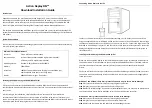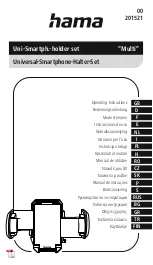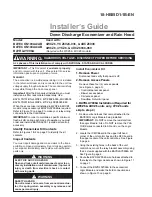
98
TK 56430-18-IP-EN
Figure 82.
Testing for Leaks using Nitrogen
Using Pressurized Nitrogen
Safety Precautions
C
CA
AU
UT
TIIO
ON
N
H
Ha
azza
arrd
do
ou
uss P
Prre
essssu
urre
ess!!
N
Niittrro
og
ge
en
n ((N
N)) iiss u
un
nd
de
err 1
15
52
2 b
ba
arr//2
22
20
00
0 p
pssiig
g ((1
15
51
16
69
9 kkP
Pa
a)) p
prre
essssu
urre
e iin
n a
a ffu
ullll ccy
ylliin
nd
de
err a
att 7
70
0 F
F ((2
21
1 C
C))..
IIm
mp
prro
op
pe
err u
usse
e o
off h
hiig
gh
h p
prre
essssu
urre
e ccy
ylliin
nd
de
errss cca
an
n cca
au
usse
e p
ph
hy
yssiicca
all d
da
am
ma
ag
ge
e tto
o cco
om
mp
po
on
ne
en
nttss,, p
pe
errsso
on
na
all iin
njju
urry
y,, o
orr ssttrre
essss
tth
ha
att cca
an
n lle
ea
ad
d tto
o ffa
aiillu
urre
e o
off cco
om
mp
po
on
ne
en
nttss.. O
Ob
bsse
errv
ve
e tth
he
e p
prro
op
pe
err h
ha
an
nd
dlliin
ng
g o
off ccy
ylliin
nd
de
errss::
•
Always keep the protective cap on the cylinder when not in use.
•
Secure the cylinder in a proper storage area, or fasten the cylinder to a cart.
•
Do not expose to excessive heat or direct sunlight.
•
Do not drop, dent, or damage the cylinder.
•
Use a pressure regulator and a safety pressure relief valve as part of the pressure testing equipment. The safety
pressure relief valve should be the non-adjustable, non-tampering type. The valve should bypass any time the
pressure exceeds its setting.
•
Open the supply valve slowly. Use regulators and safety valves that are in good condition















































